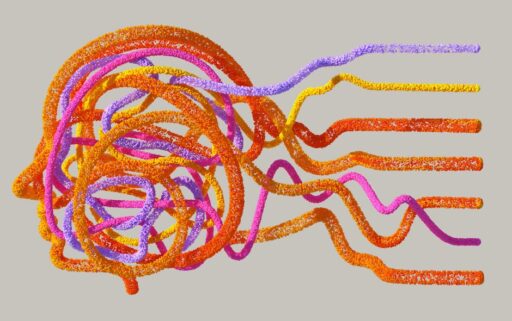SIMA 2: DeepMind’s Next‑Gen Generalist AI Agent
DeepMind has released a research preview of SIMA 2, a significant evolution in generalist AI agents that couples advanced language and reasoning capabilities with embodied interaction. By integrating large‑model reasoning with skills learned through extensive gameplay and self‑generated training, SIMA 2 moves beyond instruction following toward understanding, planning, and learning within virtual environments. Its design signals important advances for robotics, agentic systems, and long‑term work on artificial general intelligence (AGI).
What is SIMA 2 and how does it differ from earlier agents?
SIMA 2 is a Gemini‑powered embodied agent trained to perceive, reason, and act in rich 3D worlds. Where earlier agents could follow explicit instructions in controlled settings, SIMA 2 demonstrates weaker reliance on human‑provided demonstrations and stronger internal reasoning, enabling better transfer to novel environments.
Core innovations
- Gemini integration: SIMA 2 leverages a compact, high‑reasoning Gemini model to interpret language, plan multi‑step actions, and execute decisions.
- Embodied training: Hundreds of hours of video game data teach the agent to navigate, manipulate objects, and solve goals in simulated 3D spaces.
- Self‑improvement loop: The system generates new tasks and reward signals internally, using its own experience to bootstrap learning without constant human labeling.
- Generalization: The agent shows large performance gains in previously unseen environments compared to its predecessor.
These components combine to produce a more general agent: one that can reason about instructions, interpret its sensory input, and adapt its behavior through internal feedback.
What makes SIMA 2 a step forward for generalist AI agents?
At a high level, SIMA 2 extends capabilities along three axes: reasoning, embodiment, and autonomous learning. Below we break down why each axis matters.
1. Improved reasoning
By integrating Gemini for language understanding and internal chain‑of‑thought style reasoning, SIMA 2 can translate abstract instructions into concrete plans. For example, when asked to find “the house the color of a ripe tomato,” the agent maps the instruction to the concept “red” and then searches for and navigates to a red house—demonstrating semantic grounding between language and perception.
2. Stronger embodied skills
Training on hundreds of hours of gameplay helps SIMA 2 develop motor and navigation primitives that resemble human play. These embodied skills let the agent interact with 3D objects, prioritize relevant stimuli, and complete tasks that require multi‑step coordination.
3. Self‑supervised improvement
A key differentiator is SIMA 2’s ability to generate its own training tasks and reward signals. After establishing a baseline from human gameplay, the agent is deployed to new environments where a companion model invents tasks and another model scores outcomes. Those scored attempts form the dataset for further training, enabling the agent to learn from its own mistakes through iterative practice.
How was SIMA 2 trained?
SIMA 2’s training workflow blends human data, synthetic data, and model‑based task generation:
- Human gameplay forms a strong initial policy and behavioral baseline.
- Fine‑tuning with gameplay and simulated interactions imparts embodied skills like navigation and object manipulation.
- On‑the‑fly task generation creates diverse objectives tailored to new environments.
- A reward model scores agent attempts to create labeled examples for self‑training.
This mix allows SIMA 2 to start from human competence and quickly adapt to new scenarios through self‑guided refinement—mirroring how humans learn from both instruction and experimentation.
Practical demonstrations and capabilities
In demonstrations, SIMA 2 has shown the ability to:
- Describe and reason about unfamiliar, photorealistic scenes generated by world models.
- Identify objects and act on instructions expressed in natural language, emojis, or shorthand.
- Discover novel strategies in games and environments it was not explicitly trained on.
These examples highlight SIMA 2’s capacity to fuse semantic understanding with embodied perception—an essential feature for agents intended to operate in open, dynamic settings.
What are the implications for robotics and AGI?
SIMA 2 advances the idea that embodied interaction is central to building broadly capable AI. A real‑world robot must combine high‑level understanding (what objects are, where to go, how tasks relate) with low‑level control (joint torques, balance, precise actuation). SIMA 2 focuses on the high‑level cognitive layer—conceptual understanding, multi‑step planning, and environment reasoning—while remaining complementary to specialized physical control systems.
For researchers pursuing AGI, the agent highlights several promising directions:
- Unified models that combine language reasoning with sensory and motor skills.
- Scalable self‑supervised pipelines that reduce dependence on dense human labeling.
- World model integration to populate training environments with realistic, varied scenarios.
Further progress will require bridging simulated success to robust real‑world performance, improved sample efficiency, and careful consideration of safety and alignment.
What are the main challenges and limitations?
Despite notable gains, SIMA 2 faces several open challenges:
- Sim‑to‑real transfer: Performance in simulated or game worlds does not guarantee reliable behavior in physical environments with noisy sensors and unstructured dynamics.
- Low‑level control: SIMA 2 emphasizes high‑level planning rather than fine motor control; integrating with physical controllers remains a separate engineering problem.
- Safety and alignment: Autonomous task generation and self‑improvement loops must be audited to prevent reward hacking, unintended behaviors, or escalation of harmful policies.
- Compute and data costs: Training large embodied agents and their companion models requires substantial compute, and cost‑effective scaling remains a concern.
How does SIMA 2 relate to other research in world models and memory systems?
SIMA 2’s ability to interpret and act in internally generated photorealistic environments connects directly to advances in generative world modeling and AI memory. Generative world models supply rich, varied scenarios for agents to practice skills at scale; memory systems help agents retain task‑relevant experience and generalize learning across episodes.
For readers interested in the underpinning technologies, see our coverage on generative world models and persistent memory for AI:
- Marble Launches Generative World Model for 3D Creation — on photorealistic environment generation.
- AI Memory Systems: The Next Frontier for LLMs and Apps — on designing memory for long‑term agent performance.
How should practitioners and policymakers approach agents like SIMA 2?
Adopting embodied, self‑improving agents calls for balanced technical and governance responses:
- Rigorous evaluation: Standardize benchmarks for generalization, safety, and interpretability in both simulated and real settings.
- Human‑in‑the‑loop oversight: Maintain human review for high‑risk deployments and create accessible auditing tools for reward and task generation pipelines.
- Incremental deployment: Start with constrained, low‑risk use cases and increase autonomy only with validated safeguards.
- Cross‑disciplinary collaboration: Combine robotics, cognitive science, and policy research to anticipate societal impacts.
What next for SIMA 2 and embodied AI research?
Research previews like SIMA 2 are designed to stimulate collaboration, external evaluation, and exploration of practical applications. The immediate next steps include improving sim‑to‑real transfer, refining internal reward mechanisms to reduce undesirable behaviors, and integrating robust memory and perception modules for longer‑horizon tasks.
Looking further ahead, the community will watch closely for how such agents scale when paired with specialized robotics controllers, how their self‑improvement loops behave at scale, and how governance frameworks adapt to the growing capabilities of embodied AI.
Key takeaways
- SIMA 2 combines Gemini reasoning with embodied learning to produce a more general, self‑improving agent.
- Self‑generated tasks and internal reward models let the agent learn from its own experience, reducing dependence on human labels.
- Significant research challenges remain around physical implementation, safety, and cost‑effective scaling.
Further reading
For broader context on the trajectories shaping this field, check our deep dives into long‑term AI development and strategy: The Future of AI: Beyond Scaling Large Language Models.
Ready to follow the next phase of embodied AI?
SIMA 2 represents a concrete step toward agents that understand language, perceive complex worlds, and iteratively teach themselves new skills. If you follow robotics, AGI research, or agentic systems, this preview is a useful signal of where multimodal, embodied AI is headed.
Stay informed: subscribe to Artificial Intel News for ongoing analysis, technical breakdowns, and expert commentary on SIMA 2 and related developments. Explore our related coverage and send tips or questions to our editorial team to help shape future reporting.
Call to action: Subscribe to Artificial Intel News and read our latest analyses to track how embodied agents like SIMA 2 reshape AI, robotics, and real‑world applications.






